In recent weeks, the ABC has displayed shocking bias in the immigration debate.
In late March, ABC’s The Link aired a shockingly biased segment whereby presenter Stan Grant tried to bully Dick Smith on immigration, aggressively dismissing Smith’s arguments and replacing them with a whole bunch of myths and faulty logic in support of a ‘Big Australia’.
ABC Lateline then aired a half-hour segment on housing affordability, which failed to even mention mass immigration’s key role in driving up housing demand and prices in Sydney and Melbourne, despite me cutting a monologue on this exact issue for Lateline, which the ABC left on the cutting room flaw.
And last week, ABC The Drum aired a shockingly biased segment spruiking benefits from immigration without acknowledging the various costs for the incumbent population, including for housing.
Over the weekend, we got another dose of the ABC’s bias with an article entitled Housing affordability: Blame supply for high prices, not tax breaks, says former banker, which badly misrepresented the view of former CBA chief, Ralf Norris, who argued that Australia’s housing affordability woes are primarily a demand-side problem caused by strong population growth [my emphasis]:
As crowds flock to property auctions in Sydney and Melbourne this weekend, former banker Sir Ralph Norris says blame a lack of supply for the sky-high prices likely to be achieved.
Sir Ralph said surging demand is driving home prices up in Australia’s two biggest capital cities, not generous tax policies or lax bank lending practices…
He said a shortfall of supply will continue to be a problem because of significant population growth.
“The issue is going to be around appropriate infrastructure, and also land release policies,” he told Business PM…
“Obviously negative gearing is an issue and that really comes down to government tax policies, but the fundamental issue here is one of demand,” he said…
An unbiased reading of Ralph Norris’ comments should have produced a heading like: “Housing affordability: Blame strong population growth, not tax breaks, says former banker” or “Housing affordability: Blame high immigration for high prices, not tax breaks, says former banker”. But no, the ABC instead chose to go with the supply angle, despite Norris explicitly stating that “the fundamental issue here is one of demand” caused by strong population growth.
It’s an important difference. If the housing problem has been caused by excessive population growth driving an imbalance between housing demand and supply, then the obvious solution is to slash immigration to historical norms from recent turbo-charged levels (see below charts).
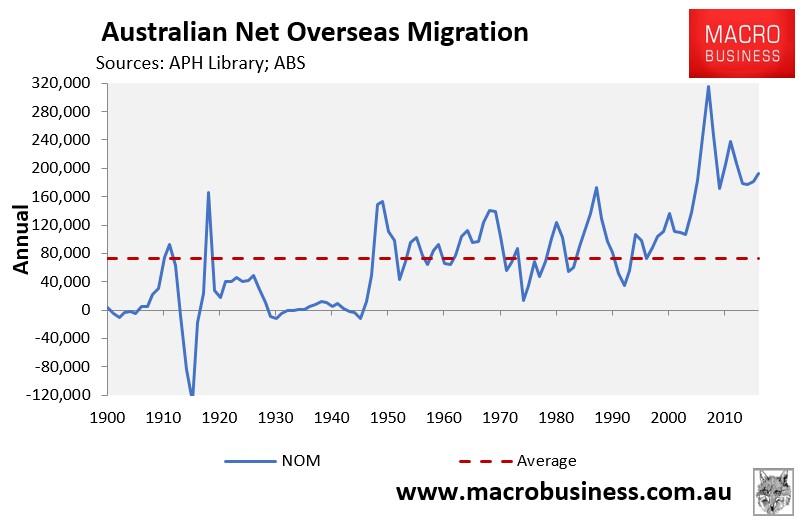
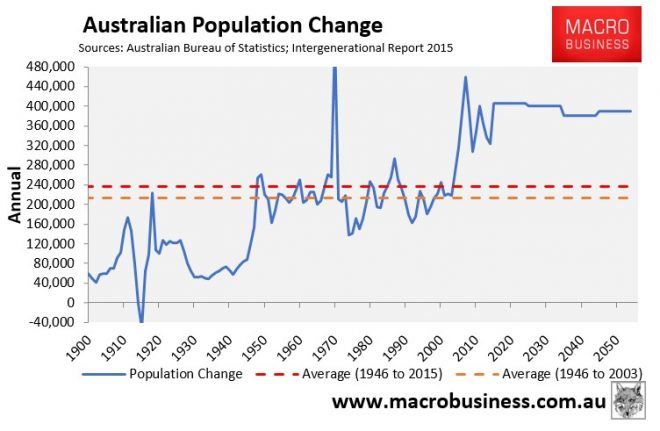
However, by conveniently blaming supply, then the inferred solution is to simply ‘build more houses’.
Anyone actually looking at the data can see that the demand-supply imbalance in Sydney and Melbourne has been caused primarily by excessive immigration-fueled population growth. Both cities have been the primary destination of migrants, which has seen Melbourne add a ridiculous 1 million people (a 27% increase) over the past 12 years, whereas Sydney added 821,000 people (a 20% increase):
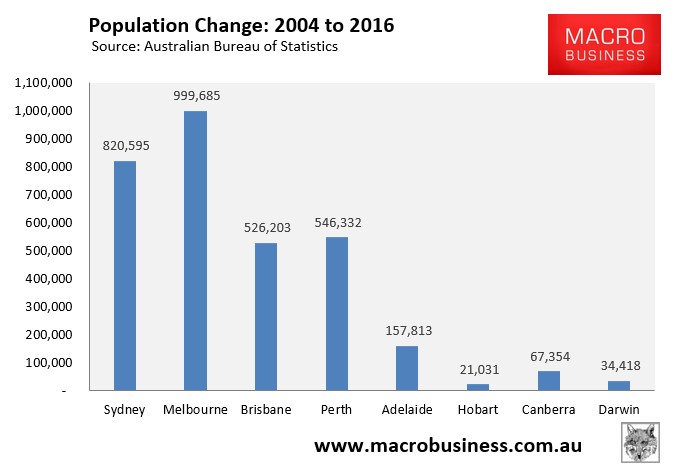
Moreover, because of mass immigration, Sydney’s population is projected to grow by 87,000 people per year (1,650 people each week) to 6.4 million over the next 20-years – effectively adding another Perth to the city’s population:
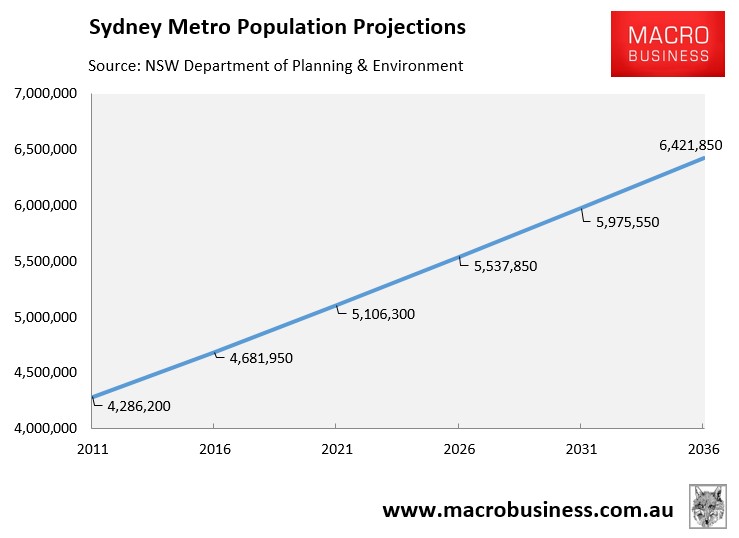
Whereas Melbourne’s population is projected to balloon by 97,000 people per year (1,870 people each week) over the next 35 years to more than 8 million people:
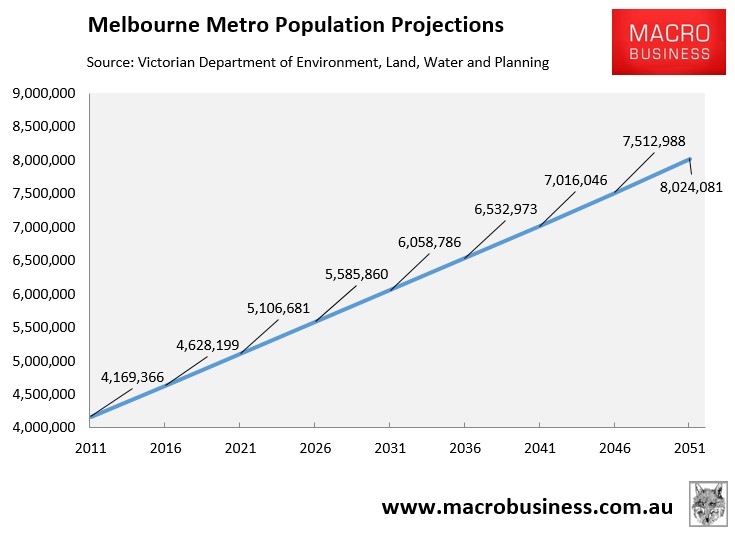
To be fair to the ABC, it is not alone in misrepresenting the housing problem: the Turnbull Government, the RBA, and numerous economists have made the same erroneous argument that a lack of supply is to blame – completely ignoring mass immigration’s preeminent role in the matter.
The fact remains that it is a direct policy choice how ‘big’ Australia becomes, not a fait accompli. And this will depend primarily on the size of the immigration program that Australia chooses to run.
As shown in the next chart, which comes from the Productivity Commission, Australia’s population will reach more than 40 million mid-century under current immigration settings, at least 13 million more than would occur under zero net overseas migration (NOM):
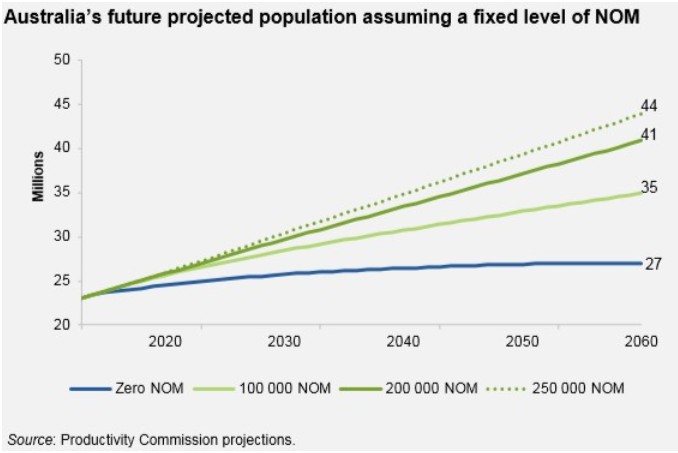
That’s a heck of a lot of extra people to build infrastructure and housing for versus a lower or zero NOM policy.
Given Australia’s mass immigration settings are significant demand-drivers behind Sydney’s and Melbourne’s housing woes, why not include as a solution reducing immigration to the long-run norm of 70,000 people a year? It’s not rocket science, but unfortunately the ABC and the mainstream media refuse to acknowledge the obvious for fear of being perceived as ‘racist’ or ‘xenophobic’.

